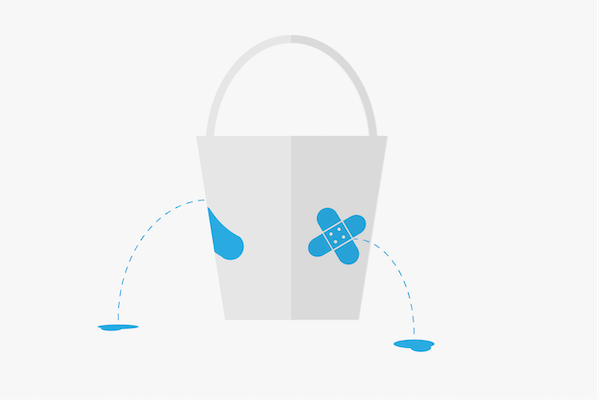Churn Rate
The term churn rate describes the relationship between customers who no longer use a service and the total number of customers. As a rule, the churn rate is related to a certain period of time - for example, a month. The result is a value that provides information about a possible decrease in the customer base and the average customer retention. Especially for two-year contracts or newsletter subscriptions, the churn rate is used in order to be able to react promptly to a decline in the customer base. The word “Churn” is made up of Change and Turn.
General information
The churn rate originated in economics and was mostly used where customers enter into long-term or medium-term contracts with companies, for example internet providers, telephone providers or pay-TV companies. In contrast to the retention rate, the churn rate refers to those customers who terminate a contract or let it expire. If retention and churn rate are added with the same time reference, the result should be 100%. This analysis provides analysts with an accurate picture of loyal customers who are willing to change their customer base and allows this data to be incorporated into other analysis models such as the CLV or customer satisfaction.
In the next step, the causes can be identified. This, however, requires surveys, feedback and analyses. As an economic key figure, the churn rate does not provide any information about the reasons for customer behavior. These can lie with the company and the services offered, with competitors and the market situation as well as with the customers themselves. The company's employees, the service quality or the lack of problem-solving competence of employees and companies also suggest that customers are willing to change. However, the churn rate is only an indicator of insufficient customer satisfaction; it is not a reliable metric that covers all possible causes.
Calculation of the churn rate
The churn rate can be calculated as follows:
Number of customer losses in a time interval / Number of all customers in a time interval
Calculating the churn rate is only possible if a time interval is used as a basis. As a rule, this is one month. Now the number of all customers can be used either at the beginning or at the end of the month. The problem: If the beginning is selected, this is only a part of the customer behavior.[1] The values, which develop with the different time intervals, can lead to misinterpretations. Especially for large or fast-growing companies, small changes in the calculation methods are problematic because they do not adequately reflect the actual customer behavior. For a comparison with competitors, the churn rate is not suitable anyway due to the different methods.
As a result of these inaccuracies, the calculation of the churn rate was changed:
Number of customer losses in a time interval / ((Number of all customers at start + Number of all customers at end of time interval) / 2)
Now the customer losses are adequately represented in relation to the time interval of one month. However, if the churn rate is to be calculated for a different period, such as a quarter of a year, a different calculation method must be chosen. The calculation method is particularly relevant if the churn rate data is to be used for further analyses. In predictive modeling and the calculation of customer value, the data situation must be as accurate as possible so that the predictions have a reasonable basis.
Example
A company has 500 customers at the beginning of the month, but only 450 customers at the end of the month. The churn rate would be 10.52%.
50 / ((500 + 450) / 2) = 0.1052 (To get a percentage, multiply the result by 100.)
Significance for online marketing
Business models based on registrations and contracts can use the churn rate to optimize their portfolio and customer service, as it is a first indicator for dissatisfied customers. A churn rate of 0 is of course ideal, but the value of the churn rate depends on various factors - business model, industry, product and service on the entrepreneur side as well as satisfaction, loyalty and customer loyalty on the customer side. If the churn rate is particularly high, it is advisable to place more emphasis on customer relationship management.
A solid customer base is crucial for profitability. Measures such as customer recovery, customer acquisition or targeted marketing can serve to maintain profitability at high churn rates. However, the causes of high customer losses should first be identified before the customer base is enlarged. These causes can lie along the entire value chain: This includes not only customer service, but also the entire customer journey and all associated processes and technical solutions.[2]
References
- ↑ A Better Way to Calculate Your Churn Rate blog.recurly.com. Accessed on December 2, 2015
- ↑ Guide to Getting Your Customer Churn Rate in the Zone wordstream.com. Accessed on December 2, 2015

